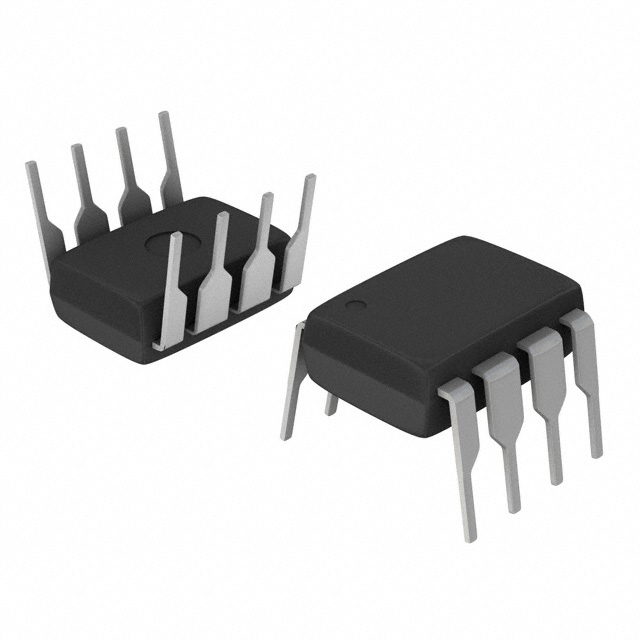Data Rate
:
Operating Supply Voltage
:
Supply Current
:
Operating Temperature Range
:
Packaging
:
Mounting Style
: Through Hole
Package / Case
: PDIP N
Features: · Low-power serial transmitter/receiver for battery-backed systems
· Transmitter steals power from receive signal line to save power
· Ultra-low static current, even when connected to RS-232-E port
· Variable transmitter level from +5 to +12 volts
· Compatible with RS-232-E signals
· Available in 8-pin, 150 mil wide SOIC package (DS275S)
· Low-power CMOSApplicationThe DS275 is designed as a low-cost, RS-232-E interface expressly tailored for the unique requirements of battery-operated handheld products. As shown in the electrical specifications, the DS275 draws exceptionally low operating and static current. During normal operation when data from the handheld system is sent from the TXOUT output, the DS275 only draws significant VDRV current when TXOUT transitions positively (spacing). This current flows primarily into the RS-232 receiver's 3-7 k=load at the other end of the attaching cable. When TXOUT is marking (a negative data signal), the VDRV current falls dramatically since the negative voltage is provided by the transmit signal from the other end of the cable. This represents a large reduction in overall operating current, since typical RS-232 interface chips use charge-pump circuits to establish both positive and negative levels at the transmit driver output. To obtain the lowest power consumption from the DS275, observe the following guidelines. First, to minimize VDRV current when connected to an RS-232 port, always maintain TXIN at a logic 1 when data is not being transmitted (idle state).
This will force TXOUT into the marking state, minimizing VDRV current. Second, VDRV current will drop to less than 100 nA when VCC is grounded. Therefore, if VDRV is tied directly to the system battery, the logic +5 volts can be turned off to achieve the lowest possible power state.
Pinout SpecificationsVCC -0.3 to +7.0 volts
SpecificationsVCC -0.3 to +7.0 volts
VDRV -0.3 to +13.0 volts
RXIN ±15 volts
TXIN -0.3 to VCC + 0.3 volts
TXOUT ±15 volts
RXOUT -0.3 to VCC + 0.3 volts
Storage Temperature -55°C to +125°C
Operating Temperature 0°C to 70°CDescriptionThe DS275 Line-Powered RS-232 Transceiver Chip is a CMOS device that provides a low-cost, very low-power interface to RS-232 serial ports. The receiver input translates RS-232 signal levels to common CMOS/TTL levels. The transmitter employs a unique circuit which steals current from the receive RS- 232 signal when that signal is in a negative state (marking). Since most serial communication ports remain in a negative state statically, using the receive signal for negative power greatly reduces the DS275's static power consumption. This feature is especially important for battery-powered systems such as laptop computers, remote sensors, and portable medical instruments. During an actual communication session, the DS275's transmitter will use system power (5-12 volts) for positive transitions while still employing the receive signal for negative transitions.
Parameters: | Technical/Catalog Information | DS275 |
| Vendor | Maxim Integrated Products |
| Category | Integrated Circuits (ICs) |
| Number of Drivers/Receivers | 1/1 |
| Type | Transceiver |
| Voltage - Supply | 4.5 V ~ 5.5 V |
| Package / Case | 8-DIP (300 mil) |
| Packaging | Tube |
| Protocol | RS232 |
| Lead Free Status | Contains Lead |
| RoHS Status | RoHS Non-Compliant |
| Other Names | DS275
DS275
|

 DS275 Data Sheet
DS275 Data Sheet







